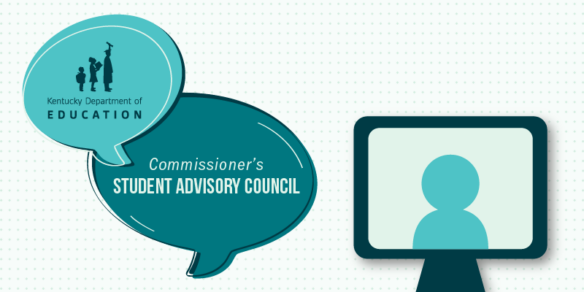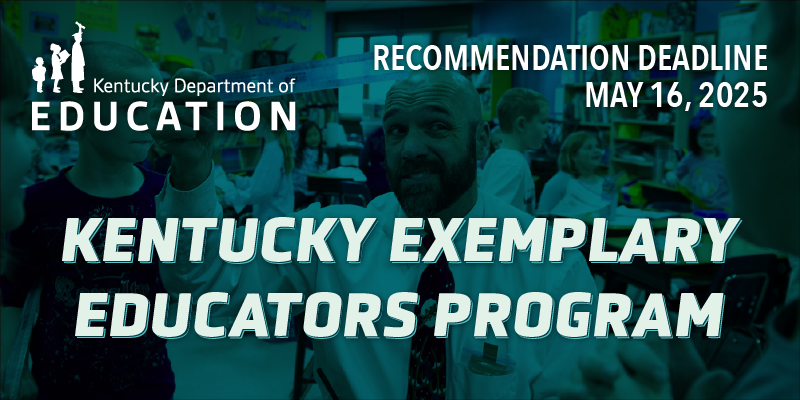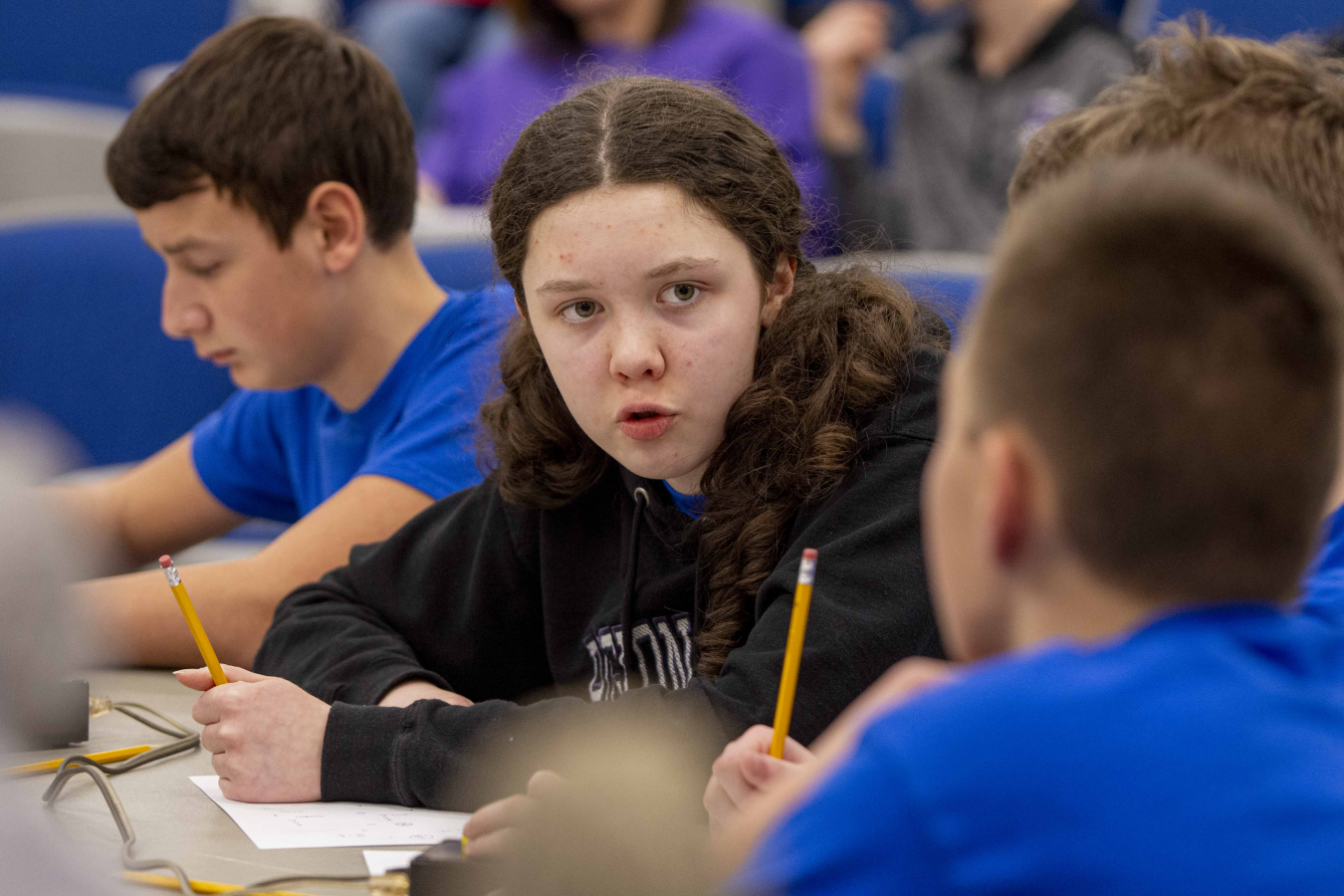 Content warning: This article discusses suicide. If you or anyone you know is struggling, please contact the 988 Suicide and Crisis Lifeline.
Content warning: This article discusses suicide. If you or anyone you know is struggling, please contact the 988 Suicide and Crisis Lifeline.
(FRANKFORT, KY) – Members of the Kentucky Department of Education’s (KDE’s) Commissioner’s Student Advisory Council discussed ways to address vaping and substance use within schools during their council meeting on Oct. 29.
Judi Vanderhaar and Jessica Napier, program consultants with KDE’s Office of Continuous Improvement and Support, discussed the latest information from the Youth Risk Behavior Survey (YRBS) with the council.
“We are using this information that you all share with us to inform our work and share with the different role groups we train.” Vanderhaar said.
According to the YRBS data, the percentage of high school students who have used an electronic vapor product at least once was reported at its highest in 2019 at 53%. Since then, there has been a decrease to 41% in 2023, matching the same percentage from the YRBS in 2015, when the question was first asked.
Vanderhaar also shared that the report data indicates an increase from 2017 to 2023 in the percentage of high school students who felt sad or hopeless for more than two weeks. This increased from 29% in 2017 to 42% in 2023.
Vanderhaar said the data shows 8% of all 10th grade students reported a suicide attempt in the past year. About 24% of students who reported using nicotine in the past month also reported a suicide attempt in the past year; 29% percent of students using marijuana in the past month also reported a suicide attempt in the past year; and 30% of students who reported using both nicotine and marijuana reporting a suicide attempt in the past year.
“There is clearly a connection when we look at mental health, suicide and substance use,” Vanderhaar said. Napier shared the importance of focusing on building students’ Sources of Strength as well.
Samarah Higgins, a senior from John Hardin High School (Hardin County), shared her experience with being around younger students and how students are exposed to these substances.
“We have a lot of predatory marketing, and a lot of younger students are victims of that, even in their own households,” Higgins said. “So really I think it’s taking the time to educate a lot of our younger students to say this is what this is if you see something like this in your own possessions.”
Aniji Fox, a senior from Mayfield High School (Mayfield Independent), shared her thoughts on making younger students aware of substance.
“I think personally, if we brought in law enforcement to educate younger students and to instill things in their brain about substance abuse and vaping, like what it is … I’m sure a bunch of younger kids have probably seen it. Kids are smarter than most people think,” Fox said.
Khoa Ta, a junior on the council from Owensboro High School (Owensboro Independent), said resources at school have helped students.
“My district has specific vape boxes where you can dispose of vapes without getting in trouble or just being able to remain anonymous at the same time which I think is an amazing place to start. They actually have (anti-vaping) pamphlets right next to it,” said Ta.
Higgins shared the importance of presenting an alternative coping mechanism for students using vape substances versus stating the negative impacts from substance use.
“I think we need to think about how schools can engage communities and really involve them in the process and the transition of healing that coping mechanism,” Higgins said.
Higgins continued by sharing how many students have relied on these products as a quick fix, and solutions should focus on finding ways to help students replace the quick fix to their stress and emotions.
“I think that’s honestly one of the quickest ways schools in general can allow students to see a difference: to allow them to see that there is another alternative to what is in front of them,” Higgins said.
The 2023 YRBS was completed by 1,925 students in 48 public high schools and by 1,481 students in 37 public middle schools in Kentucky during the spring of 2023.
Complete Kentucky survey results can be accessed at the KDE Youth Risk Behavior Survey (YRBS) website. The national data can be found at the CDC’s Youth Risk Behavior Surveillance System website.
Student input on Kentucky’s Assessment and Accountability System
Preston Graham, a junior from Woodford County High School who sits on the Commissioner’s Student Advisory Council and is the current non-voting student member on the Kentucky Board of Education, presented to council members an overview of a framework for new assessment and accountability systems that is currently being developed with the Kentucky United We Learn Council.
“The reason we’re updating this accountability system is to focus more on vibrant learning experiences … This is more than just traditional learning within a classroom,” he said.
Graham emphasized the importance of student feedback in shaping the design for the new systems.
Isabella Edghill, a senior from duPont Manual High School (Jefferson County), said she was encouraged to hear the inclusion of vibrant learning in the new framework and the recognition of its importance when it comes to student learning.
“I like the idea of incorporating these vibrant learning experiences into the assessment (and) accountability system because we’re recognizing that students learn and present their learning in different ways. Not everyone does well on tests, but at the same time it does not mean they’re not exceeding in the classroom in other ways,” Edghill said.
Preston asked council members to fill out a survey that will collect input on various areas within the new framework. He also encouraged members to find at least one additional student to take the survey by Nov. 11.
“Students are the most important group in education, so we need as many students’ responses as possible,” Graham said.
The next Commissioner’s Student Advisory Council meeting will be held virtually on Dec. 10.




Leave A Comment